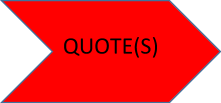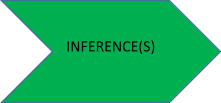Question 3: Response Guidance
Mark Schemes
It is important that you understand the mark scheme, because this is what teachers are looking at to judge your work. I want you to focus on how you can get the top marks for each question.
Level 4 (16-20 marks): Perceptive, Detailed Evaluation
-Critically explores the effects of writer’s deliberate choices
-Identification and understanding of a range ofmethods
-Selects judicious textual detail
-Convincing and critical response to the statement posed.
Lower down the mark scheme:
Level 3 –Clear, Relevant Evaluation
Level 2 – Some Evaluation
Level 1 – Simple, Limited Comment
Writing Frame
Different schools use different writing frames to guide responses.
Some classics are:
- P.E.E. (Point, Evidence, Explain) or P.E.A. (Point, Evidence, Analysis); these two are the same thing by different names
- P.E.E.L (Point, Evidence, Explain, Link back to the question)
- P.E.A.C.E. (Point, Evidence, Analysis, Cross-reference, Effects)
It is best if you are a free spirit in your writing and move through your analysis as you desire. Those who are awarded the best marks are not restricted by sticking to the acronyms mentioned above.
See the diagram:
Formulate Response
For example, How has the writer used language to describe … ?
Purpose
First you need to understand the question! What purpose are you expected to comment on in your answer?
In this instance the purpose is to ‘describe’. Therefore, you need to comment on what extent the text is describing something.
Make clear and succinct statements that directly answer the question about the purpose and the subject.
Language Techniques
Annotate your extract, identifying as many language techniques that specifically match the question. (Make sure that they are located in the lines that are mentioned for this question!)
Make a clear comment about the device that you identified.
Quotation(s)
Select judicious evidence that shows the technique that has been identified.
Inference(s)
Explore meanings that are intended though use of the language technique. Can you find any deeper meanings that match the whole text? What could it suggest that is not initially obvious on first reading?
You can repeat this middle process (Technique(s), Quote(s), Inference(s)) as many times as possible, to squeeze as much meaning out the quotation you have selected. There will be many things to write about as you deconstruct the text. The deeper you dig, the more perceptive you will become!
Effect(s)
Explore the various thoughts and reactions that the reader may be experiencing, due to the techniques that have been used. Be critical and offer your judgement; do you think the writer has been successful in their intention?
- What must you understand about the question?
- Your answer should include: Purpose / Subject
- What type of methods must you search for in the text?
- Language
- When commenting on the effect on the reader, what should you explore?
- Your answer should include: Thoughts / Reactions / Judgement / Critical




